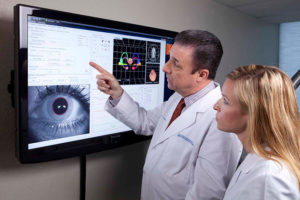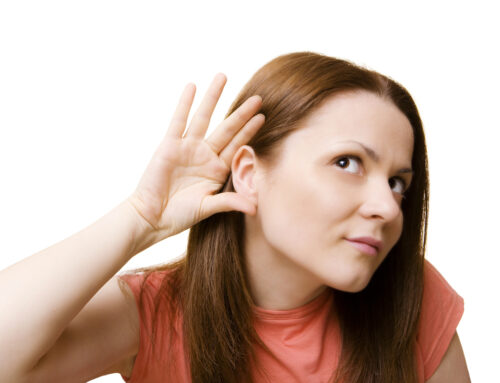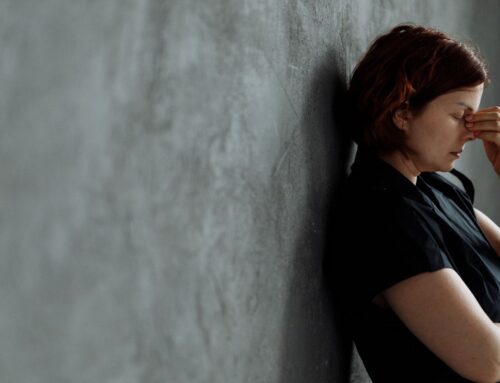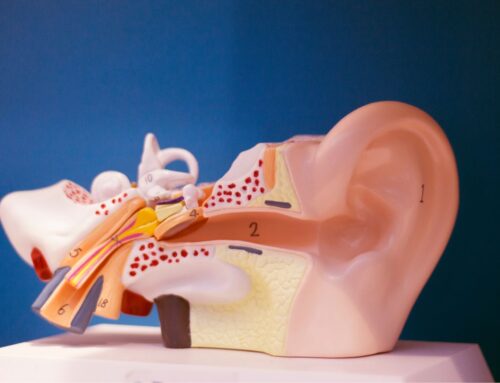The ‘eyes’ have it.
When I ask my patients how much they think their eyes affect healthy balance, they sometimes look perplexed.
The truth is… your eyes play a vital role. I wholeheartedly believe “the eyes are the windows to the ears.” And as part of National Eye Care month, I want to take the opportunity to touch on this.
You see, our Doctors of Audiology observe patient eye movements during ocomotor testing. So beyond the ears, the eyes are integral. Each patient’s eye movement is carefully evaluated. The eyes reveal great insight that contributes to my patient’s ‘balance story’.
Now, let’s try a little exercise.
Stand up, close your eyes…and stand as steady as possible.
For some, they’ll find it is a completely different sensation than standing with their eyes open.
Do you have a ‘balance story’? Your eyes may tell me more than you think.
 As a vestibular audiologist, I use a series of comprehensive diagnostic tests to help my patients, so I have a better understanding of their challenges. I utilize a combination of specialty equipment, evidence-based protocols and my expertise through the years addressing balance disorders. This provides our team – all vestibular doctors of audiology – precise information about how a patient’s vestibular system is processing and performing. That means we include visual stimulation elements during testing. Our unique approach, directed solely by our doctors of audiology, allows us to maximize technology to ascertain the unique specifics of each diagnosis. During this streamlined process, I gain more thorough insight. I can precisely evaluate a patient’s vestibular ocular response.
As a vestibular audiologist, I use a series of comprehensive diagnostic tests to help my patients, so I have a better understanding of their challenges. I utilize a combination of specialty equipment, evidence-based protocols and my expertise through the years addressing balance disorders. This provides our team – all vestibular doctors of audiology – precise information about how a patient’s vestibular system is processing and performing. That means we include visual stimulation elements during testing. Our unique approach, directed solely by our doctors of audiology, allows us to maximize technology to ascertain the unique specifics of each diagnosis. During this streamlined process, I gain more thorough insight. I can precisely evaluate a patient’s vestibular ocular response.
So getting to the root of balance issues and understanding what can be achieved takes a level of specialization and training greater than the results of one test or exam.
One component to a successful evaluation is the vHIT, or video head impulse test. This cutting-edge technology is non-invasive for patients and allows me to look at my patient’s precise eye movement under magnification with specialty lenses.
Another key element that reveals the balance story is the Epley Omniax® Chair. Here my patients undergo positional testing (wearing goggles), and I study high-resolution images of their eyes. By studying their highly detailed eye movements, I hone an exact diagnosis along with recommended treatment.
I also utilize C-D-P or computerized dynamic posturography. I gain valuable input on how vision cooperates with each patient’s inner ears, joints, feet and ankles. This testing helps reveal how our eyes cooperate and help our body finely tune balance because each area provides the brain information needed to maintain normal balance function.
Our specially-trained vestibular Doctors of Audiology also examine and record head movement, including up-down and side-to-side movement. We look for how the movement creates blurriness.
Yet our eyes reveal even more.
The eyes play a crucial role not only in testing and evaluation, but in balance treatment. They have pivotal work to do during therapies that may range from watching customized therapy videos to utilizing rotational-type chairs. Both are integral to our Advanced Vestibular TreatmentSM (AVT).
So next time you ask yourself …”Why do I feel dizzy?” Remember that the ‘eyes’ have it.
But I’ll have your back.






Leave A Comment